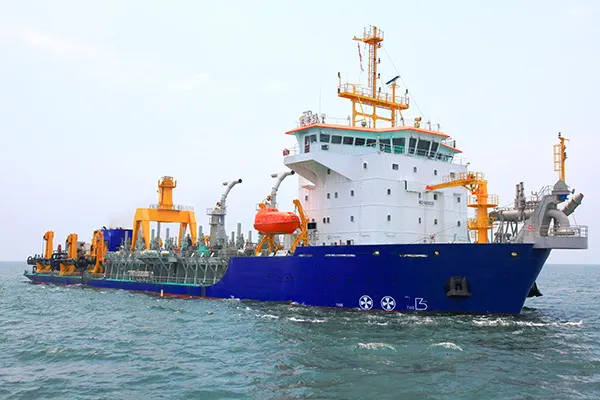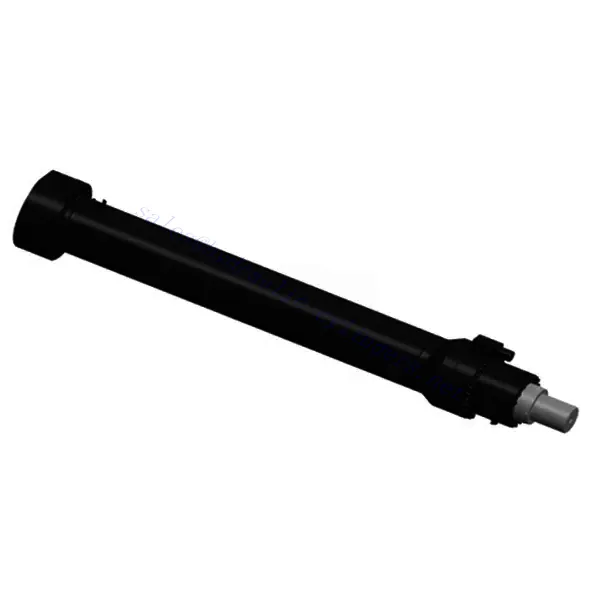Trailing Suction Dredger Heave Compensation Cylinder
Trailing Suction Dredger Heave Compensation Cylinder

The trailing suction dredger heave compensation cylinder is a cutting-edge hydraulic device that has revolutionized the efficiency and effectiveness of dredging operations. Designed to provide precise heave compensation, this cylinder ensures optimal dredging performance even in challenging marine environments.
The trailing suction dredger heave compensation cylinder is a game-changer in the field of marine dredging. Its heavy compensation capability, robust construction, and high-precision control contribute to enhanced efficiency and accuracy in dredging operations. By following proper usage methods and adopting a proactive maintenance approach, marine professionals can maximize the performance and lifespan of this exceptional hydraulic device. Embrace the power of the trailing suction dredger heave compensation cylinder and experience the difference it can make in your dredging endeavors.
Trailing Suction Dredger Heave Compensation Cylinder Key Characteristics:
- Heave Compensation Capability: The trailing suction dredger heave compensation cylinder is specifically engineered to counteract the effects of vessel heave during dredging operations. It effectively compensates for vertical movements, allowing consistent and accurate suction pipe positioning.
- Robust Construction: Built with durability in mind, this cylinder is crafted from high-quality materials that offer exceptional strength and resistance to corrosion. It can withstand harsh marine conditions, ensuring long-lasting performance and reliability.
- High-Precision Control: The cylinder’s advanced hydraulic system enables precise control over the heave compensation process. It allows for responsive adjustments, ensuring the suction pipe maintains the desired depth and position for efficient dredging.
Trailing Suction Dredger Heave Compensation Cylinder Parameter:
| Product Name | Trailing Suction Dredger Heave Compensation Cylinder |
| Features: | Compensate the relative displacement of the drag head and the hull when working |
| Bore diameter: | Up to 400mm |
| Rod diameter: | Up to 360mm Stroke up to 4000mm |
| Pressure: | up to 32MPa |
| Thrust force: | Maximum 1600KN |
| Applications: | Trailing Suction Dredger |
Rod diameter: up to 360mm
Stroke up to 5200mm
Dredger Tank Cutter-Suction Cylinders Application:

Usage Method Of Trailing Suction Dredger Heave Compensation Cylinder:
- Preparation: Conduct a thorough inspection before using the trailing suction dredger heave compensation cylinder to ensure all components are properly working. Check for any signs of damage, leaks, or worn-out seals.
- Installation: Mount the cylinder securely to the dredger or related equipment, ensuring stability during operation. Follow the manufacturer’s guidelines for proper installation, including the alignment of hydraulic connections.
- 液压系统集成: Connect the cylinder to the hydraulic power source using compatible hoses or fittings. Verify that the connections are tight, leak-free, and properly aligned.
- Calibration: Calibrate the heave compensation system according to the specific dredging requirements. This may involve adjusting parameters such as stroke length, speed, or pressure. Refer to the manufacturer’s instructions for precise calibration methods.
- Operational Control: Activate the hydraulic power source to initiate the heave compensation process. The trailing suction dredger heave compensation cylinder will automatically respond to vessel heave, maintaining the desired suction pipe position for efficient dredging. Monitor the operation closely for optimal results.
How Does A Double Acting Hydraulic Cylinder Work?
A double-acting hydraulic cylinder is a type of hydraulic actuator that operates in both directions, providing force and motion in both the extension and retraction strokes. It consists of a cylindrical barrel, a piston, piston rods, seals, and ports for hydraulic fluid.
Here is a step-by-step breakdown of how a double-acting hydraulic cylinder works:
- Fluid Intake: The hydraulic cylinder is connected to a hydraulic power unit or pump supplying pressurized hydraulic fluid. The fluid is typically an oil-based hydraulic fluid.
- Extension Stroke: When hydraulic fluid is supplied to the cylinder’s rod-end port, it enters the cylinder’s barrel behind the piston. The fluid’s pressure pushes the piston and the connected piston rod outward, extending the cylinder.
- Retraction Stroke: To retract the cylinder, hydraulic fluid is supplied to the cylinder’s cap-end port. The fluid enters the barrel in front of the piston, exerting pressure and pushing the piston and piston rod back into the cylinder.
- Sealing Mechanism: The hydraulic cylinder is equipped with seals, such as piston seals and rod seals, which prevent hydraulic fluid leakage. These seals ensure the fluid is contained within the cylinder, maintaining the pressure and preventing force loss.
- Control Valves: Control valves are used to control the direction and flow of hydraulic fluid. These valves direct the fluid to the appropriate port of the cylinder, allowing for extension or retraction based on the desired motion.
- Piston and Rod Design: The piston and piston rod are typically sealed off from each other to ensure that the pressurized fluid only acts on one side of the piston at a time. This design allows for separate extension and retraction strokes, providing bidirectional movement.
- Load Application: The piston rod of the hydraulic cylinder is attached to the load or the mechanism that requires force or motion. As the hydraulic fluid extends or retracts the piston, the power generated is transferred through the piston rod to the load, enabling it to move or exert force.
- Pressure Relief: To control the speed and force of the hydraulic cylinder, pressure relief valves or flow control valves may be used in the hydraulic system. These valves regulate the pressure and flow of hydraulic fluid, preventing excessive pressure buildup and ensuring safe operation.
工厂的能力和产能:
(1) 装配
我们拥有一流的自主研发装配平台。液压油缸生产车间拥有 4 条半自动提升油缸装配线和 1 条全自动倾斜油缸装配线,设计年生产能力 100 万支。特种油缸车间配备了各种规格的半自动清洗装配系统,设计年生产能力 20 万只,并配备了知名数控加工设备、加工中心、高精度油缸加工专用设备、机器人焊接机、自动清洗机、油缸自动装配机、自动喷漆生产线等。现有关键设备 300 多台(套)。设备资源的优化配置和高效利用,保证了产品的精度要求,满足了产品的高质量需求。


(2) 机加工
加工车间配备了定制的斜轨车削中心、加工中心、高速珩磨机、焊接机器人及其他相关设备,可加工最大内径 400 毫米、最大长度 6 米的气缸管。

(3) 焊接

(4) 油漆和涂料
配备中小型圆筒自动水性漆喷涂线,实现机器人自动上下料和自动喷涂,设计产能为每班 4000 件;
我们还拥有一条由动力链驱动的大型油缸半自动喷漆生产线,设计产能为每班 60 箱。


(5) 测试
我们拥有一流的检验设施和试验台,确保气缸的性能符合要求。

We are one of the best hydraulic cylinder manufacturers. We can offer comprehensive hydraulic cylinders. We also provide corresponding 农用齿轮箱. We have exported our products to clients worldwide and earned a good reputation because of our superior product quality and after-sales service. We welcome customers at home and abroad to contact us to negotiate business, exchange information, and 与我们合作!
参观我们的 VR 工厂
通过以下方式参观我们的 VR 工厂
叉车液压缸如何工作?
液压缸应用:


